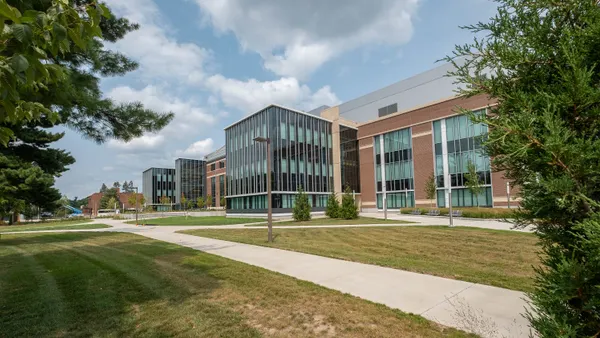Dive Brief:
-
Nearly three-quarters of U.S. architects and more than two-thirds of building owners are paying mind to building health as a part of the design and construction processes, according to a new report from Dodge Data & Analytics.
-
Daylighting, products that improve thermal comfort and manage acoustics, as well as spaces that promote socializing are among the top wellness-minded design features identified in the report, which also noted growth around biophilic design and the need to offer building occupants the opportunity for physical activity.
- The incorporation of these features into commercial and institutional projects is likely to follow the same path as green construction, which has been widely adopted as companies realize the financial and business advantages. Of the building owners surveyed who recognized the impact of wellness-related building features on their leasing rates and asset values, 73% noted faster rates while 62% reported higher values.
Dive Insight:
The report, "The Drive Toward Healthier Buildings 2016," comes as project owners and design and construction teams hone their focus on wellness features in the built environment. One example of this trend was the public release of the WELL Building Standard from the International WELL Building Institute in October 2014. The IWBI was founded by Delos, a partner in the Dodge report, with the goal of developing and implementing standards for building-occupant health in the areas of air and water quality, light, fitness and physical and mental comfort. As of April, the IWBI had certified more than 100 projects and 30 million square feet of space.
The WELL Standard has also been brought into line with the U.S. Green Building Council's LEED rating system, which focuses on the sustainability of the physical structure and its systems. In April 2014, the Green Building Certification Institution — which administers the LEED building rating system and its related professional credentials — and the IWBI announced a partnership in which the GBCI would act as the third-party certifier of the WELL Standard.
The American Institute of Architects, which participated in the research process for the report, said the findings are in line with its own Design and Health Initiative, which launched in 2013. In April of this year, the AIA announced its partnership with the IWBI, which will assist in the work of the AIA Design and Health Research Consortium featuring design and public health thought leaders from 17 universities in the U.S. The AIA said the two organizations will work together to educate AIA members about the latest in health and design research and practices and give participants a chance to become WELL-accredited. The AIA and IWBI will also conduct and publish the results of joint research.
Other takeaways from the Dodge report include:
- More than half of building owners surveyed were not aware that healthy buildings can increase leasing rates, and 58% did not know that they can contribute to greater asset value.
- The avoidance of hazardous building materials is the most common healthy building practice, but public health professionals reported that the top incentives being considered for implementation are those that promote physical activity and continual air quality measurement in buildings.
- Nine in 10 public health professionals said their organizations are researching buildings' impact on occupant health.
- Four in 10 owners said they are interested in working with architects to explore healthy building practices.











